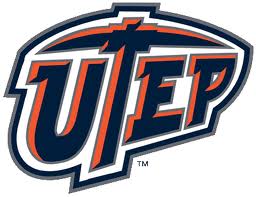Below is a summary of the abstract you submitted. Presenting author(s) is shown in bold.
If any changes need to be made, you can modify the abstract or change the authors.
You can also download a .docx version of this abstract.
If there are any problems, please email Dan at dar78@pitt.edu and he'll take care of them!
This abstract was last modified on May 23, 2019 at 2:58 p.m..

The surge of antibiotic-resistant pathogenic bacteria has driven the search for alternative approaches to treat bacterial infections and overcome this urgent healthcare challenge. Actinobacteria phages are promising candidates for this role, given their ability to kill important human bacterial pathogens while being harmless to humans. To contribute to this research effort, we attempted the isolation of novel Arthrobacter phages from our local environment. However, after using the enrichment method with 24 different samples, we failed to isolate new Arthrobacter sp. phages from the El Paso region, probably due to the particularly dry conditions of the 2018 fall in the Chihuahuan desert. Thus, for the genomic annotation component of the course, our UTEP’s Phage Hunter team was assigned the phage BossLady, isolated from Germantown, MD., by the Howard Hughes Medical Institute. BossLady has a 51,178 bp-long circular genome coding for 79 genes, 72 in the forward direction and 7 in the reverse direction. One of the reverse-oriented genes is located in an isolated position near the 5′end, a trait shared by most other members of the AO2 subcluster. Our annotation of BossLady’s genomic sequence revealed an important discrepancy with the phage morphology data in the PhagesDB database. This led us to re-examine the morphotypes and approved functions assigned to some of the shared genes across members of the AO2 subcluster. At the morphological level, we found that BossLady and AO2 subcluster member BarretLemon are morphologically classified Siphoviridae even though their genomes contain genes coding for Tail Sheet and Tail Tube proteins, which are exclusive of phages displaying Myoviridae morphology. Considering that BossLady and BarretLemon exhibit close genomic association to all members of the AO2 subcluster, that all AO2 phages for which electron microscopy images are available exhibit Myoviridae morphology, and that no electron microscopy data is available for BossLady and BarretLemon, we propose that they should be reclassified as Myoviridae. At the genomic annotation level, we found that gene product 12 (gp12) showed extensive sequence identity with similarly positioned genes of most AO2 subcluster phages and that such genes had been functionally identified as head-to-tail connector proteins. However, HHPRED analyses showed that BossLady’s gp12, just like all other BLAST-matching genes analyzed, lacked the required sequence relatedness with SSP1 gp15 or SSP1 gp16, which would justify their functional assignment as head-to-tail adaptor or head-to-tail stopper respectively. Thus, we did not assign the head-to-tail connector function to gp12 and propose that such function should be eliminated for similarly located genes of members of the AO2 subcluster. Our analyses indicate that, as our knowledge of the functional properties of phage-encoded genes increases, substantial refinement of previous genomic annotations will be needed.
